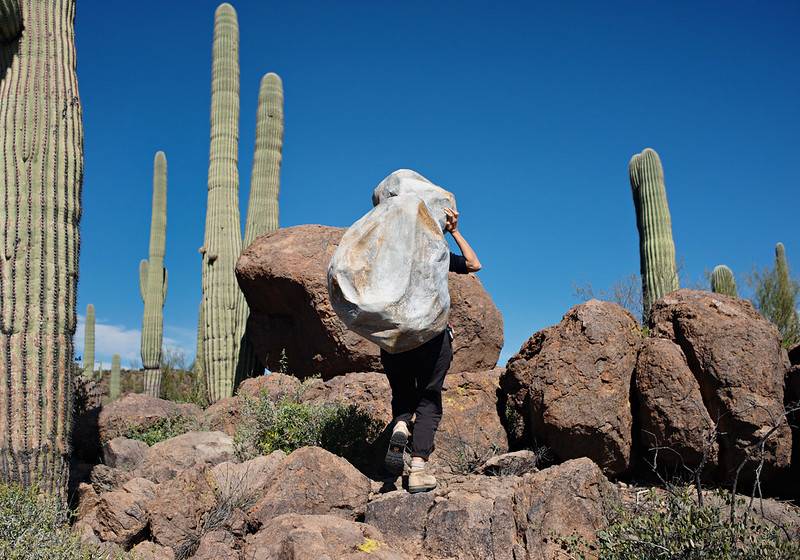
Nazafarin Lotfi, Transit, 2020. Digital photograph, dimensions variable. Courtesy of the artist and Regards, Chicago.
Nazafarin Lotfi: Subtle Time
Online exhibition beginning June 1, 2020
University Galleries of Illinois State University is pleased to present Nazafarin Lotfi: Subtle Time as an online exhibition beginning June 1, 2020. This exhibition is organized by the Teen Art Group at University Galleries. While she was a Fall 2019 visiting artist in the Wonsook Kim School of Art, Lotfi presented her work to the Teen Art Group. She has been working remotely with the group and University Galleries’ staff since that time.
Teen Art Group participants in 2019–2020: Brianna Berndt, Jeremiah Berndt, Grace Bingley, Ellie Braun, Katya Cline, Darrell Cope, Joshua Dahmm, Lydia Fisher, Aspen Goss, Kasia Jankowiak, Grace Marcy, Kathryn Novotny, Korynne Russell, Maddison Satterfeal, and Jeremy Swanson.
The Teen Art Group was founded in 2018 at University Galleries by director and chief curator Kendra Paitz, with support from the Illinois Prairie Community Foundation—Mirza Arts and Culture Fund. Each academic year, fifteen students from Bloomington High School participate in professional development activities, take a field trip to Chicago, and curate an exhibition. The 2019–2020 cohort was led by Paitz; Monica Estabrook, Bloomington High School art teacher; and Tanya Scott, University Galleries’ curator of education. The group visited the Art Institute of Chicago and Millennium Park; participated in art-making workshops, meetings, and exhibition tours at University Galleries; attended an artist lecture by Nazafarin Lotfi; curated this exhibition of Lotfi’s work; interviewed the artist ; and developed ideas for educational workshops. Due to the Coronavirus (Covid-19) pandemic, the group’s last three meetings were conducted via Zoom and this exhibition transitioned to an online format. The 2019–2020 Teen Art Group was supported by another grant from the Illinois Prairie Community Foundation—Mirza Arts and Culture Fund.
Nazafarin Lotfi: Subtle Time presents twenty recent sculptures, drawings, and photographs, and premieres two performance videos created since the start of the Covid-19 pandemic. Rooted in her experiences of growing up in post-Revolutionary Iran and continuing her education and artistic practice as an immigrant in the United States, Lotfi’s works address temporal and physical displacement, the ambiguity of borders, and the disruption of expectations placed on individual bodies. She writes, “In all the different work that I do, there is an urgent need to create space, to open up the boundaries and to complicate borders.” For example, her recent paintings are based on her research on stylized forms in Islamic world maps and, in her words, ways to “map psychological landscapes drawn from lived experience.” Meanwhile, the geometric forms in Lotfi’s colored-pencil drawings are derived from the floor plans and architectural details of her own home, as well as those of her family and friends living internationally. Rather than creating representational drawings of specific locations, she addresses memories of space through her process of cutting shapes, combining portions and angles, and collapsing indoor and outdoor distinctions.
Comprised of papier-mâché, found objects, and layered graphite, Lotfi’s sculptures offer surprising relationships between positive and negative space, interior and exterior, lightness and heaviness. They evidence the physical touch of the artist, recall the forms of boulders and other geological formations, and serve as an extension of one’s body in space. Lotfi takes this idea beyond the studio, often carrying the deceptively lightweight sculptures through parks, lifting them near monuments, rolling them through crosswalks, and sitting next to them on bus stop benches, as ways to engage people in public. Since the start of the Covid-19 pandemic, Lotfi has begun making performative videos of her walks through the desert near her Tucson home. In the 10-minute videos, the artist individually walks through the landscape, navigating terrain and wildlife but never encountering another human—the epitome of social distancing. She evidences gaining a deeper understanding of a place, while also providing a portal to a new landscape for so many who are sheltering-in-place in cities worldwide.
Nazafarin Lotfi was born in Mashhad, Iran, and is currently based between Chicago and Tucson, Arizona. She received both her MFA and her Post-Baccalaureate certificate from the School of the Art Institute of Chicago, and her BA from University of Tehran. The artist’s work has been exhibited at Brand New Gallery, Milan; Ana Cristea Gallery, New York City; DUVE Berlin, Berlin; soon.tw, Montreal; Everybody Gallery, Tucson, Arizona; and Chicago Artists Coalition, Logan Center at the University of Chicago, Regards, Arts Incubator, The Franklin, Goldfinch, Andrew Rafacz Gallery, and Ralph Arnold Gallery in Chicago. Lotfi has been awarded an artist residency by the Arts + Public Life and Center for the Study of Race, Politics, & Culture at the University of Chicago. She has received grants from the Phoenix Art Museum, Arizona; Arts Foundation for Tucson and Southern Arizona; and the city of Chicago’s Department of Cultural Affairs and Special Events. Her work is represented by Regards, Chicago.
Programming and related links
- The Teen Art Group interviewed Nazafarin Lotfi via Zoom. Watch the video here .
- Kantara Souffrant, assistant professor of Global/Non-Western Art History and Visual Culture in the Wonsook Kim School of Art, interviewed Nazafarin Lotfi. The full text is available here .
- Tanya Scott, curator of education at University Galleries, created an art lesson inspired by Lotfi’s work. View the video here .
- Nazafarin Lotfi recently produced a print with Normal Editions Workshop, a not-for-profit print research facility in the Wonsook Kim School of Art. View the print and artist profile here .
